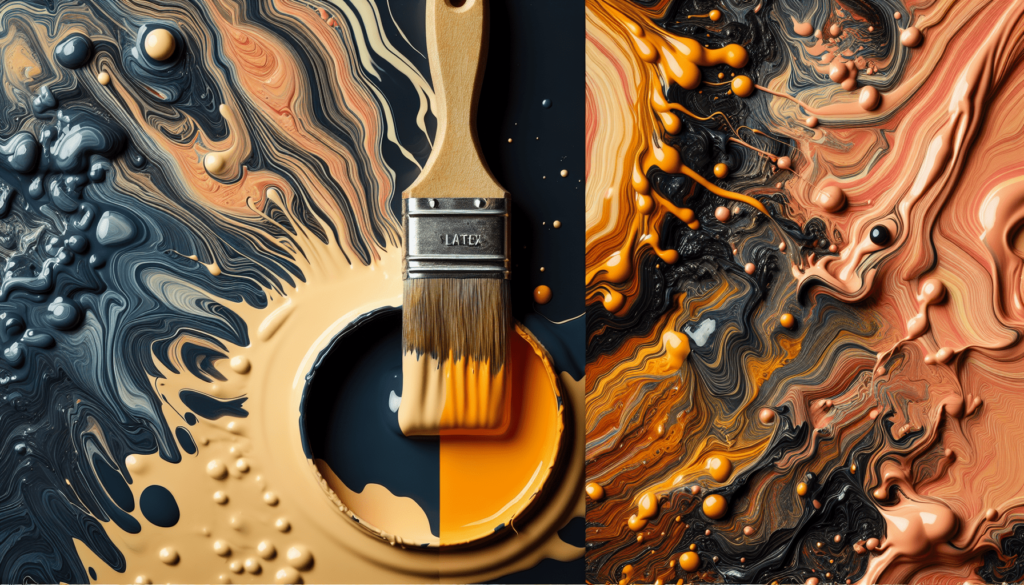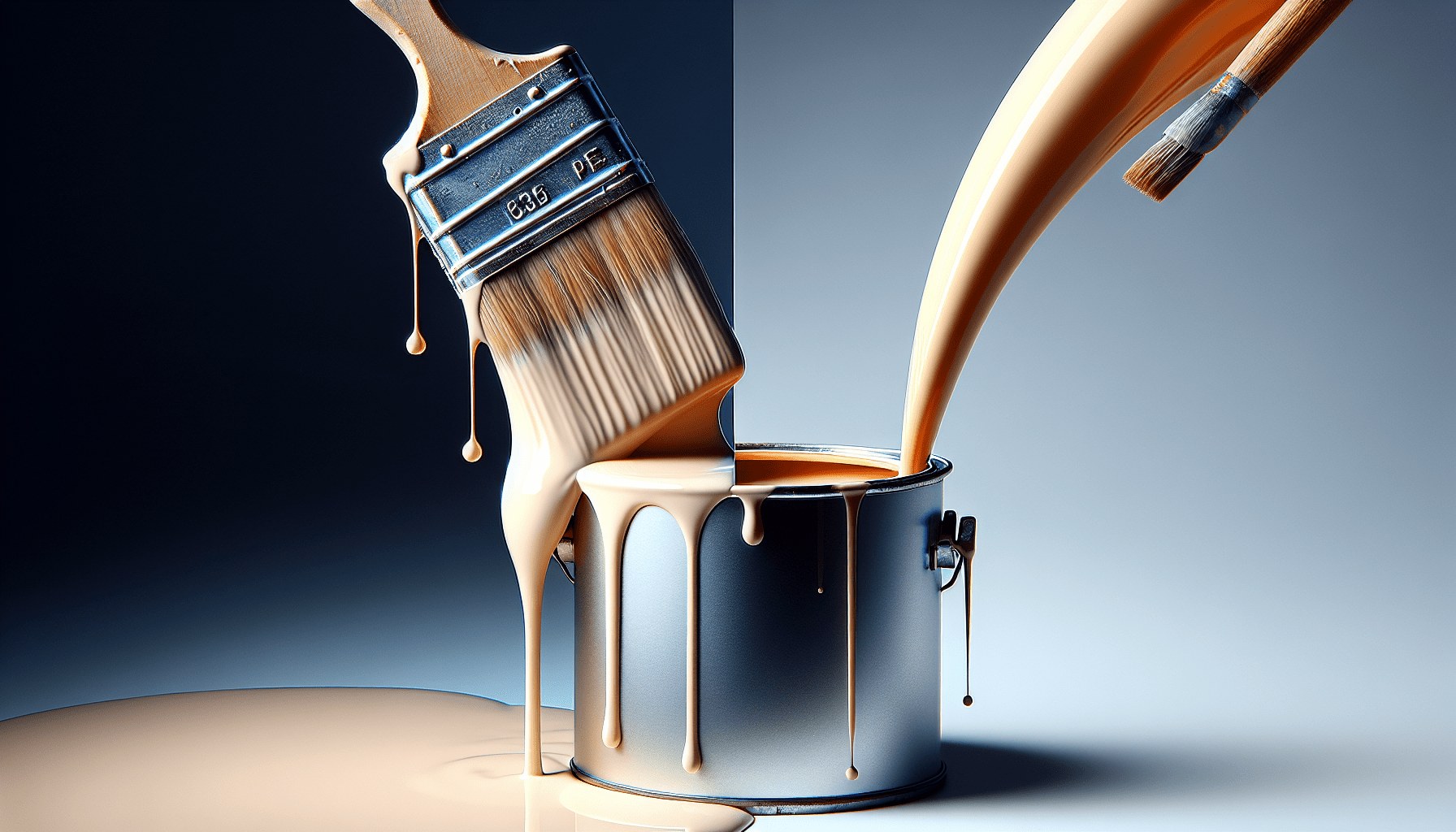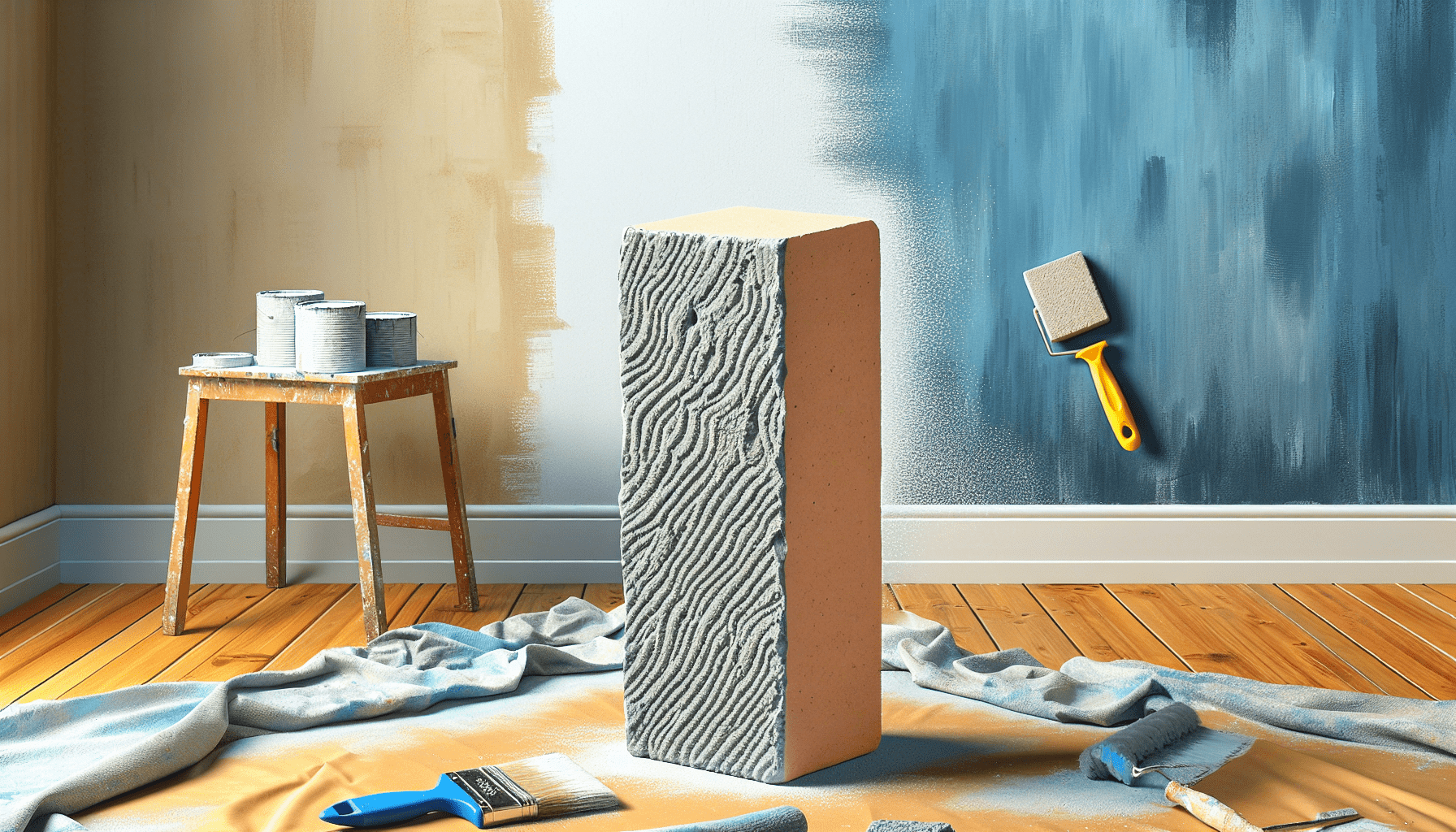In the world of painting, it is essential to understand the differences between different types of paint. Amongst the many options available, latex and acrylic paint stand out due to their versatility and wide range of applications. While both paints are popular choices for DIY projects and professional use, they have distinct characteristics that set them apart. This article aims to provide a clear understanding of the fundamental differences between latex and acrylic paint, shedding light on their composition, properties, and suitable applications. By the end, you will have a comprehensive understanding of which paint type is best suited for your artistic or practical endeavors.
Latex Paint
Composition of Latex Paint
Latex paint is composed of several key ingredients, including polyvinyl acetate, pigments, additives, and water. The polyvinyl acetate serves as the binder, holding the pigments together and creating a cohesive film when the paint dries. Pigments provide the color and opacity to latex paint, while additives enhance the paint’s performance by improving its drying time, adhesion, and durability. Water is the primary solvent used in latex paint, making it water-based and promoting easy cleanup.
Water-Based
Latex paint is classified as water-based paint, as it primarily uses water as a solvent. This characteristic offers numerous advantages, including easy application, quick drying time, and effortless cleanup. The water-based nature of latex paint also makes it more environmentally friendly compared to solvent-based paints, as it emits fewer volatile organic compounds (VOCs) during the application and drying process.
Application and Clean-Up
Latex paint is popularly chosen for its ease of application and convenient clean-up. It can be applied to a wide variety of surfaces, including walls, ceilings, and furniture, using brushes, rollers, or sprayers. Due to its water-based composition, latex paint dries relatively quickly, allowing for shorter wait times between coats and enabling faster project completion. Additionally, cleaning up after painting with latex paint is a breeze, as it can be easily removed from brushes, rollers, and other tools with just soap and water.
Adhesion
Latex paint is known for its excellent adhesion properties, allowing it to bond effectively to various surfaces. It can adhere well to materials such as wood, drywall, and metal, making it a versatile choice for both interior and exterior applications. The adhesive qualities of latex paint contribute to its longevity and resistance to peeling or flaking when applied correctly.
Flexibility
When it comes to flexibility, latex paint performs admirably. It can expand or contract slightly with temperature and humidity changes, which is essential for maintaining its appearance and structural integrity over time. This flexibility makes latex paint suitable for areas prone to moisture, such as bathrooms or kitchens, as it can withstand the occasional heat and moisture fluctuations without cracking or peeling.
Durability
Latex paint offers excellent durability, with its resistance to fading, cracking, and peeling making it a long-lasting choice for many projects. Properly applied and maintained, latex paint can withstand daily wear and tear, including regular cleaning and exposure to sunlight. Its durability makes it suitable for high-traffic areas such as hallways, living rooms, and children’s bedrooms.

Acrylic Paint
Composition of Acrylic Paint
Acrylic paint, like latex paint, contains pigments, additives, and water. However, the primary difference lies in the binder used. Acrylic paint utilizes an acrylic polymer emulsion as its binder, which provides exceptional adhesion and water resistance. The acrylic polymer emulsion forms a strong film when the paint dries, delivering vibrant color and long-lasting protection.
Water-Based
Similar to latex paint, acrylic paint is also water-based, offering easy application, quick drying, and effortless cleanup. The water in the acrylic paint acts as a solvent, allowing for easy mixing, thinning, and blending of colors. Additionally, the water-based nature of acrylic paint means it produces fewer fumes and emits fewer VOCs, making it a safer choice for both artists and those seeking indoor painting solutions.
Application and Clean-Up
Acrylic paint is well-suited for a wide range of applications in art and design. It can be applied to various surfaces, including canvas, paper, wood, and even fabric. With its water-based composition, acrylic paint can be easily thinned with water for a more transparent effect, or mixed with other mediums to achieve different textures and finishes. As with latex paint, cleaning up acrylic paint is as simple as using soap and water, eliminating the need for harsh chemical solvents.
Adhesion
Acrylic paint exhibits excellent adhesion properties, allowing it to adhere well to different surfaces. Whether painting on canvas, wood, or plastic, acrylic paint forms a strong bond, ensuring the longevity of the artwork or painted surface. The strong adhesion of acrylic paint also allows for layering and building up multiple coats, creating depth and texture in paintings.
Flexibility
In terms of flexibility, acrylic paint is known for its relatively higher flexibility compared to other paint types. It can expand and contract with temperature and humidity variations without cracking or peeling. This characteristic is crucial in preserving the integrity of artwork or painted surfaces, especially when exposed to different environmental conditions.
Durability
Acrylic paint is highly durable, making it resistant to fading, cracking, and yellowing over time. This durability is particularly important for artworks intended for long-term display or outdoor installations. Unlike some other paint types, acrylic paint maintains its vibrancy and integrity even after years of exposure to sunlight, ensuring the longevity and value of the art pieces.

Key Differences
Base Material
The primary difference between latex and acrylic paint lies in their base materials. Latex paint uses polyvinyl acetate as its binder, while acrylic paint utilizes an acrylic polymer emulsion. This variation in base material affects the overall properties and performance of the paint.
Drying Time
While both latex and acrylic paint dry relatively quickly, acrylic paint tends to dry faster than latex. The acrylic polymer emulsion in acrylic paint dries rapidly due to its water-based composition, allowing artists and painters to work more efficiently and apply multiple layers or glazes within a shorter time frame.
Toxicity
In terms of toxicity, both latex and acrylic paints are considered non-toxic when used as intended. However, certain pigments or additives in some acrylic paints may contain toxic components. It is essential to read product labels and use proper ventilation when working with acrylic paints, especially in enclosed spaces.
Color Retention
Acrylic paint exhibits excellent color retention, maintaining its vibrancy and pigmentation over time. It is less prone to fading compared to latex paint, making it a popular choice for art pieces and outdoor applications that require long-term color integrity.
Coverage
In general, acrylic paint provides a more opaque coverage compared to latex paint. The acrylic polymer emulsion in acrylic paint allows for a more concentrated application of color and texture. Latex paint, on the other hand, can have a more translucent quality, requiring additional coats for full coverage.
Sheen
Both latex and acrylic paints come in a variety of sheens, such as matte, satin, eggshell, semi-gloss, and gloss. However, acrylic paint tends to have a more consistent and reflective sheen compared to latex paint, which can appear more flat or matte.
Price
When considering the price, latex paint tends to be more affordable compared to acrylic paint. The lower cost of latex paint can be attributed to the materials used in its composition, making it a cost-effective option for large-scale painting projects or general-purpose applications.
In conclusion, while latex and acrylic paints share similarities as water-based paints, they differ in terms of composition, drying time, toxicity, color retention, coverage, sheen, and price. Latex paint, with its polyvinyl acetate binder, offers excellent application, adhesion, flexibility, and durability, making it a popular choice for interior and exterior projects. Acrylic paint, with its acrylic polymer emulsion binder, excels in adhesion, flexibility, and color retention, making it preferred by artists and those seeking vibrant, long-lasting finishes. Understanding the distinctions between these two paint types allows you to make an informed decision based on your specific needs, whether it be for home improvement or artistic endeavors.



